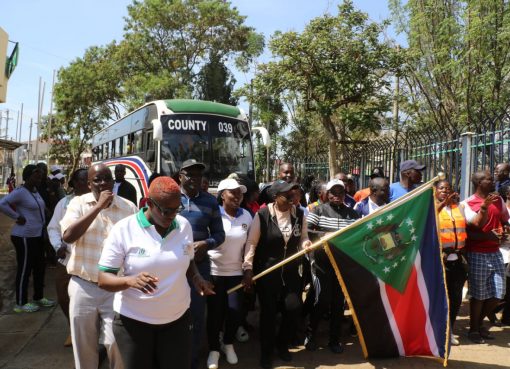Persistent shortage of Septrin drugs in health facilities in Kisumu County has elicited a major concern among stakeholders and local residents.
HIV positive individuals visiting respective facilities where they access ARVs and other related services have cried foul even as they urged the management of Jaramogi Oginga Odinga Teaching & Referral Hospital (JOOTRH) and Kisumu County Referral Hospitals to intervene.
The patients confided to KNA that they are now forced to take the ARVs minus the Septrin (Cotrimoxazole) drug which has been an integral part of the ARVs regimen.
Those living with the HIV condition feared the deterioration of their health before the government moves to restock pharmacies in public hospitals.
One of the patients told KNA in an exclusive interview Thursday that since Covid-19 struck, HIV/AIDS patients suffered a lot as global attention shifted to the latest pandemic.
Mendisa Onyango (name changed) said whenever they raised their voices over the shortage, some of health facilities gave them Septrin lasting a month just as a stop-gap measure.
Onyango said it is high time President William Ruto intervened before the problem snowballs into a tragedy since many people’s lives are at stake.
Similarly, her neighbor Beatrice Kanonda (name changed) was worried sick over the shortage of Septrin in government hospitals which spelt hard times ahead she thought aloud.
Kanonda who goes for ARVs refill at Mbale Referral Hospital in Vihiga said they started sensing danger when the drugs were drastically scaled down from six to three months.
This, she explained was long before Septrin started disappearing from the public health facilities where majority seek treatment and refill of both ARVs and the cotrimoxazole (septrin).
Kisumu County Executive for Health, Dr. Gregory Ganda said although there was a big problem with shortage of the HIV commodities, ARVs, Septrin and condoms, he will take up the matter with relevant authorities.
Ganda, however, quickly pointed out that drugs are usually supplied by the national government through Kenya Medical Supplies Agency (KEMSA) and not the County government.
Even so, the CEC said he will spearhead steps to establish the truth over the claims before issuing a comprehensive statement on the matter.
Last week, a cross-border media cafe organized by Media for Environment, Science, Health & Agriculture (MESHA) for 40 journalists drawn from the African continent brainstormed the underlying issues.
Among keynote speakers was Dr. Adele Baleta who emphasized the need to equalise access to HIV services, particularly for the key population, MSM, Transgender, those using drugs and sex workers.
Baleta said there was need to unpack the impact of gender inequalities faced by the key populations alongside those existing between children and adults who have had in relation to AIDS response.
UNAIDS, Executive Director Winnie Byanyimana declared elsewhere that the world will not defeat AIDS while reinforcing patriarchy. “We need to tackle the intersecting inequalities women face,” she added.
Byanyimana said in areas of high HIV burden, women subjected to intimate partner violence face up to 50 percent higher chances of getting infected with HIV.
The online forum was informed that by 2021 UNAIDS records indicate that 1.5 million people got infected with HIV while 38 million were Persons Living with the Virus (PLWVs) globally.
Out of the statistics, the key population including sex workers and their partners, gay men and MSM, people who inject drugs, transgender and their sexual partners all accounted for 70 per cent of new HIV infections globally.
The UNAIDS report further points out that 54 percent of PLWVs were women and girls. It also states that 28.9 million were accessing ARVs with another 10million having zero access to the drugs.
It painted a gloomy picture on the future funding landscape with stagnation of finance, global inequities and Covid-19 impact impeding progress so far made. At the same time, assistance for HIV bilateral donors other than the USA plummeted by 57 percent over the last decade.
Meanwhile, the report projected that 2025 targets will not be met or the goal of ending the epidemic by 2030. UNAIDS also pointed out that countries globally will use up to US$29.3 billion (Kshs.3.7 Trillion).
By Joseph Ouma




